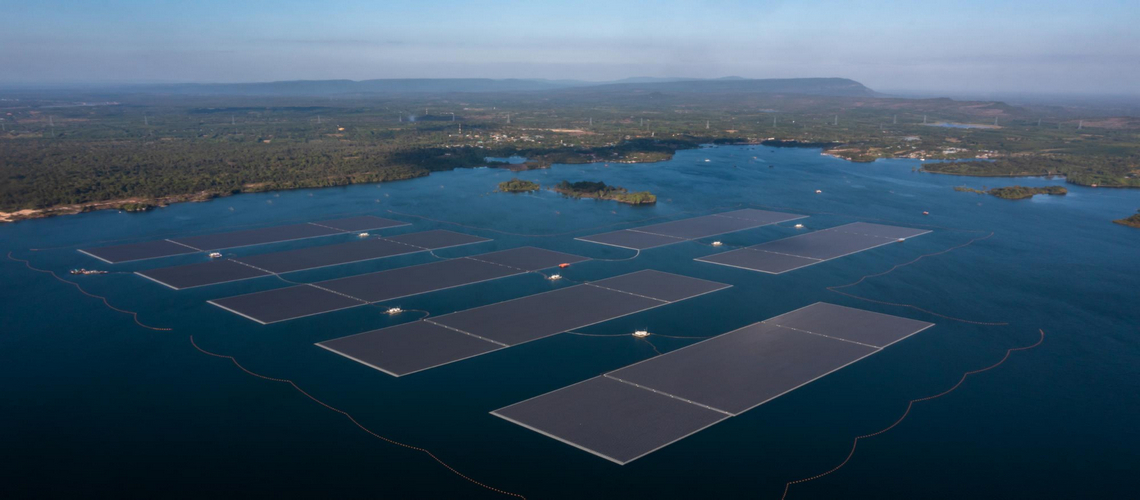Harnessing Floating Solar Panels: Powering Sustainability from Water Bodies

India has set an ambitious goal of achieving 500 GW of renewable energy by 2030, but land constraints present a significant challenge. Solar farms typically need large areas of land, which often compete with agricultural needs, urban development, and conservation efforts. But what if we could generate energy without using up precious land? The solution lies in floating solar panels, a groundbreaking approach that can turn water bodies into energy sources.
By harnessing reservoirs, lakes, and canals, India is tapping into a previously overlooked resource to drive its renewable energy initiatives. Companies like Jindal India Renewable Energy Limited are exploring such innovations, ensuring that green energy continues to grow without conflicts over land use. But how do floating solar panels actually work, and why are they becoming a popular choice? Let’s find out.
What Are Floating Solar Panels?
Floating solar panels, also known as floatovoltaics(FPV), are photovoltaic systems designed to be placed on water surfaces rather than on traditional land. These panels are supported by buoyant structures that allow them to float while being securely anchored to resist water movement. They work just like their land-based solar panels but offer additional benefits that make them an attractive option for renewable energy in India.
Key Benefits That Make Floating Solar Panels a Smart Choice
1. Efficient land utilisation
One of the main benefits of floating solar panels is that they don’t need large expanses of land. In a country like India, where land can be limited or costly, using water bodies for solar energy production can help preserve land for agriculture, housing, and other essential developments.
2. Increased energy efficiency
Floating solar panels remain cooler thanks to the surrounding water, which boosts their efficiency. In contrast, traditional solar panels on land can overheat, leading to a drop in energy output. The water helps maintain an ideal temperature, resulting in increased electricity generation.
3. Reduced water evaporation
By covering the surface of water bodies, floating solar panels help reduce evaporation, which is especially beneficial for drought-prone areas in India. This conservation of water in reservoirs and lakes ensures more availability for drinking, irrigation, and other essential uses.
4. Minimising algae growth
Algae blooms pose a major issue in stagnant water bodies, compromising water quality. By blocking sunlight from penetrating the water’s surface, floating solar panels help prevent excessive algae growth, thereby improving the health of the ecosystem.
5. Lower environmental impact
Unlike traditional solar farms that require deforestation or land modification, floating solar projects have minimal impact on natural landscapes. They can coexist with aquatic life and do not disrupt existing ecosystems, making them a great choice for renewable energy in India .
Floating Solar in India: Progress and Potential
India is rapidly embracing floating solar technology as part of its commitment to achieving 500 GW of renewable energy by 2030. Various projects across the country are showcasing the potential of this technology such as the Kayamkulam Floating Solar Project in Kerala, established by NTPC features a 92 MW capacity on a backwater reservoir.
At Jindal India Renewable Energy Limited, we are actively exploring and looking to invest in such promising sectors to ensure that India becomes a leader in sustainable energy solutions.
Challenges and the Road Ahead
While floating solar panels hold immense promise, they do come with challenges. The primary concern is the high initial investment. Floating solar projects require specialised anchoring and buoyancy technology, making them costlier than land-based systems. Additionally, because these systems are situated on water, they require extra effort, expertise and expenses for regular inspections and maintenance.
Despite these challenges, advancements in technology and government support are paving the way for more widespread adoption. With strategic policies and industry participation, floating solar could become a cornerstone of renewable energy in India.
Closing thoughts
The rise of floating solar panels marks a new era in green energy. By harnessing water bodies for power generation, India is maximising its resources while reducing its carbon footprint. As we continue to innovate and invest in renewable solutions, floating solar power is set to play a crucial role in making India self-reliant in clean energy.